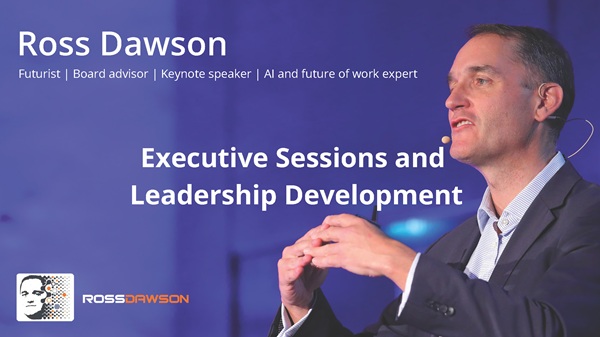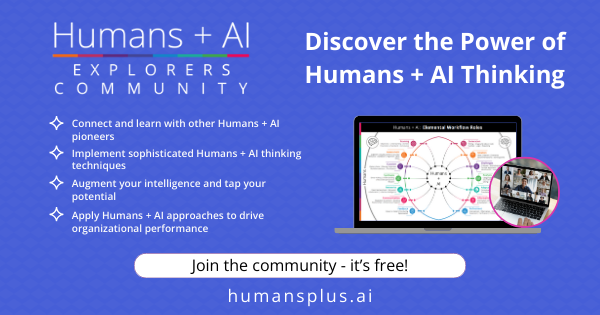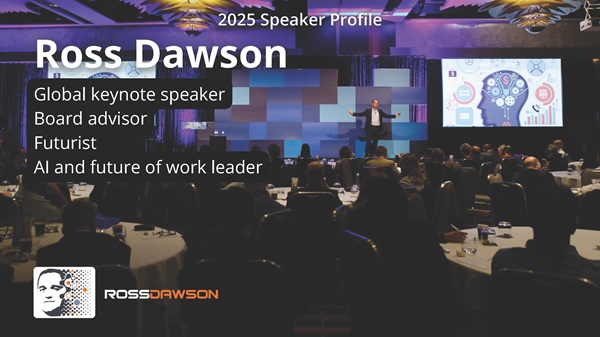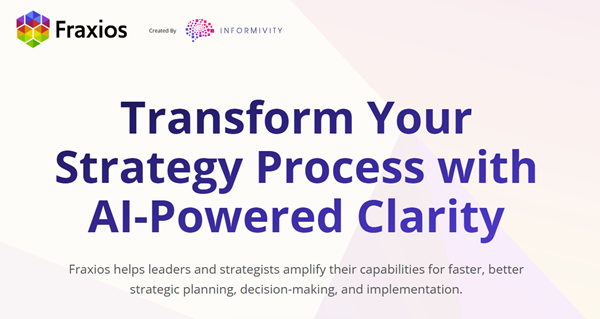“It is our duty to find out how we can best use it, where humans are first and Humans + AI are more together.”
–Ross Dawson
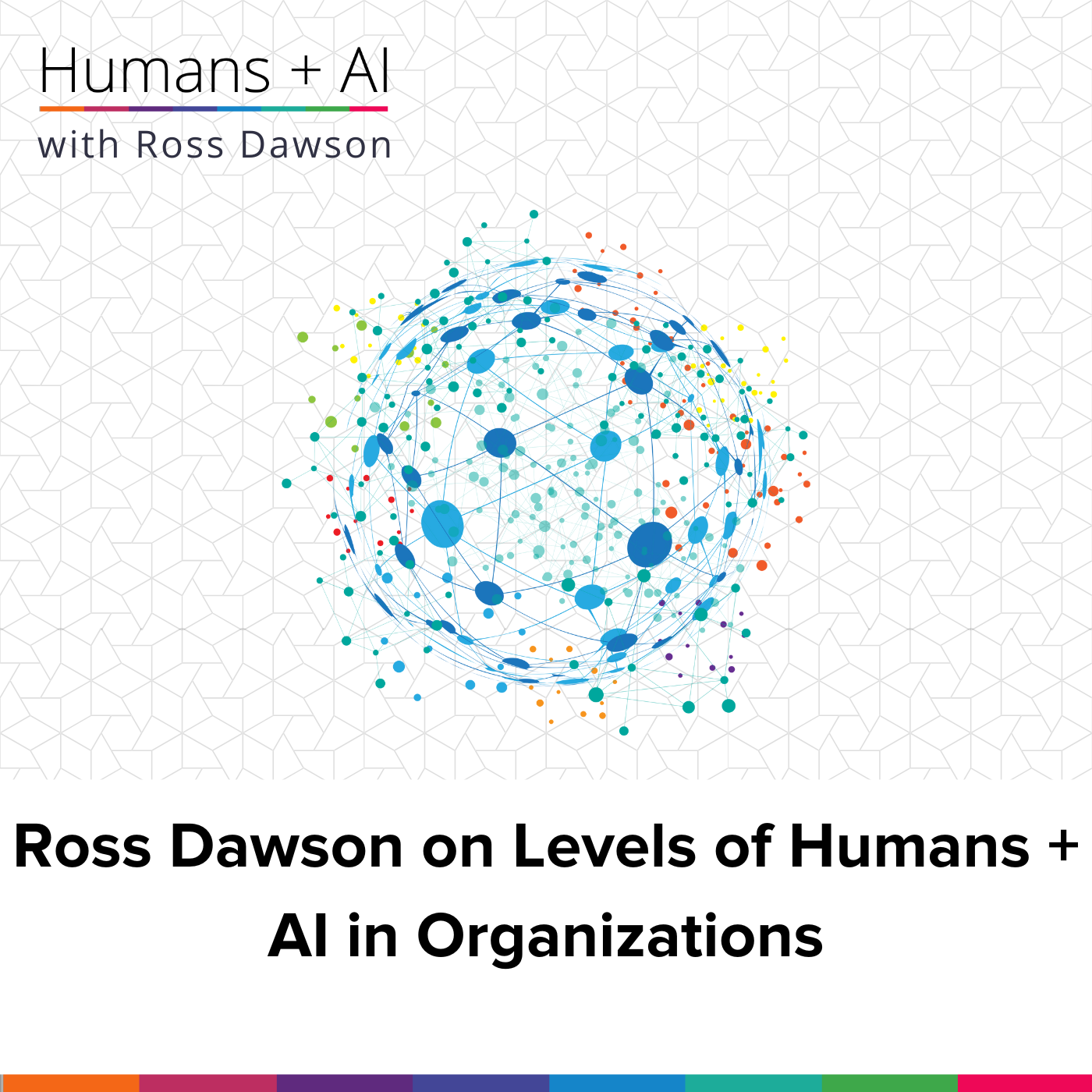
About Ross Dawson
Ross Dawson is a futurist, keynote speaker, strategy advisor, author, and host of Amplifying Cognition podcast. He is Chairman of the Advanced Human Technologies group of companies and Founder of Humans + AI startup Informivity. He has delivered keynote speeches and strategy workshops in 33 countries and is the bestselling author of 5 books, most recently Thriving on Overload.
What you will learn
- How organizations can transition from traditional models to Humans Plus AI structures
- An introduction to the six-layer Humans Plus AI in Organizations framework
- Ways AI augments individual performance, creativity, and well-being
- The dynamics and success factors of human-AI hybrid teams
- The role of scalable learning communities integrating human and AI learning
- How fluid talent models leverage AI for dynamic task matching and skill development
- Strategies for evolving enterprises using AI and human insight for continual adaptation
- Methods for value co-creation across organizational ecosystems with AI-facilitated collaboration
- Real-world examples from companies like Morgan Stanley, Schneider Electric, Siemens, Unilever, Maersk, and MELLODDY
- Practical steps to begin and navigate the journey toward Humans Plus AI organizations
Episode Resources
Transcript
Ross Dawson: If you have been hanging out for new episodes of Humans Plus AI, sorry we’ve missed a number of those. We will be back to weekly from now on, and from next week, we’ll be coming back with some fantastic interviews with our guests.
I’ll just give you a quick update and then run through my Levels of Humans Plus AI in Organizations framework. So, just a quick update: the reason for the big gap was that I was in Dubai and Riyadh giving keynotes at the Futurist X Summit in Dubai. It was an absolutely fantastic event organized by Brett King and colleagues, where I gave a keynote on “Humans Plus AI: Infinite Potential,” which seemed to resonate very well and fit with the broader theme of human potential and how we can create a better future.
Then I went to Riyadh, where I gave a keynote at the Public Investment Forum, PMO Forum, which is the organization of the sovereign wealth fund of Saudi Arabia. There, we were again looking at macro themes of organizational performance, including specifically Humans Plus AI.
When I got back home from those, I had to move house. So, it’s been a just digging myself out of the travel and moving house and getting back on top of things. We won’t have a gap in the podcast again for quite a while. We’ve got a nice compilation of wonderful conversations with guests coming up soon.
So, just a quick state of the nation: Humans Plus AI is a movement, and by listening to this, you are part of that movement. We are all together in believing that AI has the potential to amplify individuals, organizations, society, and humanity. Thus, it is our duty to find out how we can best use that, where humans are first and humans plus AI are together. The community is the center of that.
Go to humansplus.ai/community and you can join the community if you’re not there already. We have some amazing people in there, great discussions, and we are very much in the process of co-creating that future of Humans Plus AI.
We also have a new application coming out soon, Thought Weaver. In fact, it’s actually a redevelopment of a project which we launched at the beginning of last year, and we’re rebuilding that to create Humans Plus AI thinking workflows and provide a tool to do that to the best effect. In the community, people will be testing, using, and helping us create something as useful as possible.
I want to run through my Levels of Humans Plus AI in Organizations framework. This comes from my extensive work with organizations—essentially, those who understand that they need to become Humans Plus AI organizations, not just what they have been. It’s based on moving from humans, technology, and processes to organizations where AI is a complement, supporting them not just to tack on AI, but to transform themselves into very high-potential organizations.
There are six layers in the framework. It starts with augmented individuals, then humans-AI hybrid teams, learning communities, fluid talent, evolutionary enterprise, and ecosystem value co-creation. Each of those six layers is where organizations, leaders, and strategists need to understand how they can transform from what they have been to apply the best of Humans Plus AI, and how those come together to become the organizations of the future.
I’ll run through those levels quickly. The first one is augmented individuals, which is where most people are still playing as individuals. We’re using AI to augment us. Organizations are giving various LLMs to their workforce to help them improve, but this can be done better and to greater effect by being intentional about how AI can augment reasoning, creativity, thinking, work processes, and the well-being of individuals.
The framework lays out the features and some of the success factors of each of those layers. I won’t go into those in detail here, but I’ll point to some examples. In augmented individuals, a nice example is Morgan Stanley Wealth Management, where they’ve used LLMs to augment their financial advisors, providing analysis around client portfolios and ways to communicate effectively. They rely on humans for strong relationships and understanding of client context and risk profiles, but they’re supported by AI.
The second layer is human-AI hybrid teams. This is really the focus of my work, and I’ll be sharing a lot more on the frameworks, structures, and processes that support effective Humans Plus AI teams. Now we have teams that include not just humans, but also AI agents—not just multi-agent systems, but multi-agents where there are both humans and AI involved. We can design them as effective swarms that learn together and are highly functional, based on trust and understanding of relative roles, dramatically amplifying the potential of people and organizational performance.
One example is Schneider Electric, which has used its teaming approach both on the shop floor of its manufacturing plants—explicitly providing AI complements to humans to assist in their work—and with knowledge workers in designing and building human-AI teams.
The third layer is that of learning communities. I often refer to John Hagel’s mantra of scalable learning, which is the foundation of successful organizations today. This is based on not just individuals learning, but also organizations effectively learning. As John points out, this is not about learning static content, but learning by doing at the edge of change.
AI can provide an extraordinary complement to humans, of course, in classic things such as AI-personalized learning journeys, but also in providing matching for peer learning, where individuals can be matched around the challenges they are facing or have faced, to communicate, share lessons learned, and learn together. We can start to capture these lessons in structures such as ontologies, where AI and humans are both learning together, individually and as a system.
An example is Siemens, which has created a whole array of different learning pathways that include not just curated, personalized AI learning, but also a variety of ways to provide specific insights to individuals on what’s relevant to them.
The fourth layer is fluid talent. For about 15 years, I’ve been talking about fluid organizations and how talent is reapplied, where the most talented people can be applied to whatever the challenge or opportunity is, wherever it is across the organization. This becomes particularly pertinent as we move from jobs to task level—jobs are being decomposed into tasks. Some can be done very well by AI, others less so. When we move to the task level, we have to reconfigure all the work that needs to be done and where humans come in.
Instead of being at a job role, we’re now using the talent of the organization wherever and whenever it has the greatest value, using AI to match individuals with their ability to do that work. One aspect is that we can use AI to augment learning capabilities, so all work done by individuals in this fluid talent model is designed not just to use their existing talent, but to develop new relevant skills for new situations moving forward.
One example is Unilever’s FLEX program, which has been more classically based on longer-term, around six-week assignments to different parts of the organization. It’s absolutely designed for learning and growth—not just to connect people into different parts of the organization to apply their talents in specific ways, but also to develop new skills that will make them more valuable in their own careers and to the organization.
Moving above that to the higher level of the evolutionary enterprise: AI is moving fast, the competitive landscape is moving fast, and the shape of organizations needs to be not just re-architected for what is relevant, but so that it can continually evolve. We need both human and AI insight and perspectives to sense change, reconfigure the structure of the organization, and amplify value.
We need governance that enables that—constraining where relevant what is done and how it is done—but using data and insights from humans and AI together to create an evolutionary loop. One relevant example is Maersk, the Scandinavian logistics company, which was a shipping company and now has really become a data-enabled logistics service platform. It has evolved substantially in its business model, structure, and ways of working, but continues to evolve as it gathers new data and insights from across its operations, using both human and AI insights to develop and evolve how it creates value.
This takes us to the sixth level, which is ecosystem value co-creation. Back in my book “Living Networks,” I described how value is no longer created within an organization, but across an ecosystem of organizations, where there are both human experts who may reside in one organization but whose talents and capabilities can be applied across organizational boundaries, and where AI is architected not just to be inside an organization, but to evolve across an ecosystem—be that suppliers, customers, or peer organizations.
This is illustrated by MELLODY, which is a consortium or federated data structure of major pharmaceutical companies that have proprietary data around their pharmaceutical research. This data can be pooled effectively across the group of companies participating, without exposing their individual intellectual property. This creates an example of how we can use data and AI learning structures across the system, where insights learned from data from multiple organizations can be applied for learning, insights, feedback, and acceleration of drug development across different pharmaceutical companies.
So, to run through those six layers: augmented individuals, where a lot of work is happening now but much more can be done; humans plus AI teams, which I think is really the next phase; learning communities, where we absolutely need to drive learning but need to design that around humans plus AI structures; fluid talent, the reality of what will happen in a world where AI changes the nature of existing human roles; evolutionary enterprise, where we evolve over time; and finally, ecosystem value co-creation.
I’ve been working with a range of interesting organizations to put these into practice. Of course, it’s not about doing this all at once—it’s about finding a starting point as part of an overall roadmap to build not just the future state of the organization, but to build the organization into a Humans Plus AI organization that continues to evolve, be responsive to, and resilient in the face of the extraordinary pace of change we have.
We’ll be exploring these issues, among others, in conversations with guests. We have some amazing people coming up. Thank you for being part of the Humans Plus AI movement and community. Do join our other activities or tap into our resources at humansplus.ai/resources, which includes the framework I’ve just run through—so that’s accessible there.
Thank you, and I look forward to being on the journey of the Humans Plus AI podcast. Back soon next week.
Podcast: Play in new window | Download



